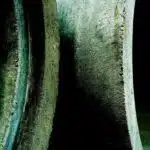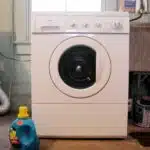Clogged sink drains can be a nuisance for any homeowner or tenant. When left unattended, they can cause water to back up and spill onto the floor, leading to costly damage and unsanitary conditions. In this article, we will discuss how to unclog a sink drain using simple tools and techniques that every homeowner can easily apply.
As a plumbing expert, it is essential to understand that sink clogs are often caused by everyday household items such as food particles, grease, hair, soap scum, and foreign objects. These substances accumulate over time and eventually form a blockage in the drainpipe. If not addressed promptly, these blockages can cause major problems that require professional assistance. Therefore, it is crucial to know how to identify and fix them before they escalate into more significant issues.
Identifying A Clogged Sink Drain
A clogged sink drain can be a frustrating and unsanitary problem. Common causes of a clogged sink drain include buildup of food particles, hair, soap scum, and grease. It is important to identify the cause of the clog before attempting to fix it, as different methods may be required for each type of blockage.
Prevention techniques are key in avoiding a clogged sink drain. Regularly cleaning your sink and disposing of food waste properly can help prevent buildup over time. Additionally, using a drain cover or strainer can catch hair and other debris before it goes down the drain. Avoid pouring grease or oil down the drain as well, as it can solidify and create a blockage.
Before gathering tools and materials to fix your clogged sink drain, it is important to first assess the severity of the blockage. If water is still able to flow through the drain but at a slower rate than usual, then a simple DIY solution may be all that is needed. However, if water cannot flow through at all or you suspect there may be damage to the pipes, it is best to call a professional plumber for assistance.
Gathering Tools And Materials
Before attempting to unclog a sink drain, it is important to have the necessary tools and materials on hand. Failure to do so can result in frustration, wasted time, and potential damage to the plumbing system. By gathering these items ahead of time, you can save yourself both time and money.
To properly unclog a sink drain, you will need the following tools and materials:
- Plunger
- Drain snake or auger
- Bucket or container
- Rubber gloves
One of the most common mistakes made when attempting to unclog a sink drain is using harsh chemicals. While these products may seem like an easy fix, they can actually cause more harm than good by eroding pipes over time. It is important to use safe methods that will not damage your plumbing system.
When working with any plumbing system, it is crucial to take proper safety measures. Wear rubber gloves to protect your hands from any harmful chemicals or debris that may be present in the drain. Additionally, make sure the area around the sink is clear of any obstacles that could cause injury while working.
By gathering the necessary tools and materials and taking proper safety precautions, you can effectively unclog a sink drain without causing damage or harm. The next step in this process is removing standing water from the sink before attempting to clear out any blockages in the drain.
Removing Standing Water
After gathering the necessary tools and materials, it’s time to address the standing water in your sink. Standing water can be a nuisance and make it harder to unclog your drain. One simple and effective method for getting rid of standing water is by using hot water. Boil a pot of water on the stove or use hot tap water and pour it down the drain slowly. This should help break up any grease or debris that’s causing the clog.
If hot water doesn’t work, you can try using chemical cleaners. Chemical cleaners are designed to dissolve organic materials such as hair, soap scum, and food particles. However, they can also be harmful if not used properly. Make sure to read the instructions carefully before using any chemical cleaner and wear protective gloves and goggles. Pour the cleaner down the drain slowly and wait for it to work its magic before rinsing with hot water.
It’s important to note that chemical cleaners should be used as a last resort as they can damage your pipes over time. If neither hot water nor chemical cleaners work, it may be time to call in a professional plumber for assistance.
| Pros | Cons |
|---|---|
| Hot Water is easily accessible | May not work for severe clogs |
| Chemical Cleaners are effective | Can be harmful if not used properly |
| Professional Plumber ensures complete solution | More expensive option |
Next, we’ll move on to removing and cleaning the sink stopper, which is often a culprit in sink clogs.
Removing And Cleaning The Sink Stopper
A sink stopper that is clogged with hair, soap scum or other debris can cause water to drain slowly or not at all. Your sink stopper should be removed and cleaned periodically to prevent slow draining water from becoming a major issue. To remove the stopper, locate the knob on top of the sink and turn it counterclockwise to release the stopper. If your stopper has no visible knob, look for a small lever underneath the sink. Once you’ve removed the stopper, clean it thoroughly with cleaning products to ensure it’s free of any debris.
Cleaning products such as baking soda and vinegar are excellent DIY solutions for cleaning sink stoppers. Pour one cup of baking soda into the drain followed by one cup of white vinegar. Allow this mixture to sit for 10-15 minutes before flushing it down with hot water. Repeat this process until all visible grime and debris have been removed from your sink stopper.
Regularly cleaning your sink stopper will significantly reduce blockages caused by hair, soap scum or other debris. However, if your efforts fail to unclog your drain, you may need to use a plunger to clear the blockage.
Using A Plunger To Clear The Blockage
When it comes to unclogging a sink drain, one of the most common methods is using a plunger. However, some people may wonder if this technique is still effective in today’s modern plumbing systems or if it has become outdated. The truth is that plungers are still a reliable tool for clearing blockages in sinks and other drains.
To use a plunger effectively, start by filling the sink partially with water so that the plunger can create suction. Next, place the plunger over the drain and press down firmly to create a seal. Then, pump the plunger up and down quickly to force air through the pipe and dislodge the blockage. Repeat this process several times until you feel the suction release and water begins to flow freely down the drain.
If you’re dealing with a particularly tough clog, there are some tips you can follow to increase your chances of success with a plunger. For example, try using petroleum jelly on the rim of the plunger to create a better seal around the drain. You can also try using hot water or a mixture of baking soda and vinegar to break up stubborn clogs before attempting to plunge them away.
Using A Drain Snake To Clear The Blockage
- Preparing a drain snake for use requires the user to select a length of cable that is appropriate for the size of the sink drain.
- Once the cable is selected, the user can insert it into the drain until it reaches the blockage.
- Once the cable is in position, the user can operate the drain snake by turning the handle in a clockwise direction to loosen and break up the blockage.
- After the blockage has been cleared, the user can remove the drain snake from the sink drain and flush it with water to clean it.
Preparing The Drain Snake
When it comes to unclogging a sink drain, using a drain snake can be an effective solution. However, before attempting to use this tool, it is crucial to prepare properly for safety reasons. You need to wear protective gear such as gloves and goggles to prevent any harmful chemicals or debris from splashing onto your skin or eyes. Additionally, make sure the area around the sink is clear of any objects that could get in the way while you are working.
Using the right technique when preparing the drain snake is also essential. Firstly, insert the snake into the drain until you feel resistance. Then slowly turn it clockwise while pushing it further down into the pipe. As you turn the handle, keep applying pressure until you feel it break through any blockages in its path. Finally, pull out the snake carefully and dispose of any debris that may have come out with it.
By taking these necessary steps when preparing your drain snake for use, you will ensure that you remain safe throughout the process and that your efforts are successful in clearing any blockages in your sink drain. Remember always to follow safety protocols and use proper techniques when unclogging your sink’s drain using a drain snake.
Using The Drain Snake
When it comes to clearing blockages in sink drains, using a drain snake is a common and effective solution. There are different types of drain snakes available, such as hand-held or electric models, each with unique features that suit different situations. Regardless of the type, proper technique is crucial for achieving successful results.
To use a drain snake effectively, start by inserting it into the drain until you feel resistance. Then, slowly turn it clockwise while pushing it further down into the pipe. It is essential to maintain steady pressure while turning the handle to break through any blockages in the pipe’s path. Once you feel that the snake has cleared the obstruction, gently pull it out and dispose of any debris that may have come out with it.
It is important to note that using a drain snake requires careful attention to safety protocols. Always wear protective gear such as gloves and goggles to prevent harmful chemicals or debris from splashing onto your skin or eyes. Additionally, ensure that the area around the sink is clear of any objects that could obstruct your work while using the tool. By following these guidelines and using proper technique when operating a drain snake, you can effectively clear blockages in your sink’s drain without damaging your plumbing system or risking injury.
Using Baking Soda And Vinegar To Clear The Blockage
The use of baking soda and vinegar is a popular method for clearing clogged sinks. This method is not only effective but also eco-friendly, making it the go-to option for many homeowners. To start, pour half a cup of baking soda down the drain followed by half a cup of vinegar. Cover the drain with a plug, and let the mixture sit for about 10 minutes.
The reaction between baking soda and vinegar creates a fizzy chemical reaction that helps break down any debris or gunk in the pipes. After 10 minutes, pour hot water down the drain to wash away any remaining blockages. If this does not work, repeat the process until you get rid of all blockages.
While this method is highly effective, some people are allergic to baking soda or cannot stand its smell. In such cases, there are several alternatives to baking soda that you can use to clear your drain without unpleasant side effects. For instance, you could try using borax or salt instead of baking soda or lemon juice instead of vinegar. However, it is crucial to note that some substitutes may not be as effective as baking soda and vinegar when it comes to clearing clogs.
Transitioning into commercial drain cleaners: While using natural solutions like baking soda and vinegar works well in most situations, sometimes stubborn clogs require more aggressive action. Commercial drain cleaners contain chemicals that break down tough blockages quickly and efficiently. In the next section, we will explore how to use commercial drain cleaners safely and effectively without damaging your sink pipes or harming the environment.
Using Commercial Drain Cleaners
As the saying goes, “time is money,” and when it comes to unclogging a sink drain, the quickest and most convenient solution may seem like using commercial drain cleaners. These products are readily available at local hardware stores or supermarkets, and they promise to dissolve any obstruction quickly. However, before rushing to buy a bottle of chemical drain cleaner, it’s essential to weigh the pros and cons of this option.
One of the advantages of using commercial drain cleaners is that they are easy to use. You only need to pour the liquid down the clogged drain, wait for some time as indicated on the label instructions, and then flush with hot water. Additionally, these products can be helpful in dissolving common clogs caused by hair, soap scum, or grease buildup. However, it’s worth noting that there are potential hazards associated with using chemical drain cleaners.
Safety precautions should always come first when handling commercial drain cleaners. These products contain harsh chemicals such as sodium hydroxide or sulfuric acid that can cause severe burns if it comes into contact with your skin or eyes. To avoid these risks, wear gloves and eye protection when handling these products. Furthermore, it’s crucial to follow all safety instructions provided by the manufacturer carefully.
In summary, while commercial drain cleaners may be a quick fix for a clogged sink drain, there are pros and cons to consider before using them. If you choose this option, always take necessary safety precautions when handling these powerful chemicals. In the next section, we will discuss preventive measures you can take to avoid future clogs without relying on chemical solutions.
Preventing Future Clogs
Preventive measures are the best long term solutions to keep your sink drain from getting clogged. One of the easiest ways to prevent clogs is to use a strainer or screen that fits over your drain. These devices can catch hair, soap scum, and food particles before they go down the drain and cause problems.
Another preventive measure is to avoid pouring grease or oil down the drain. Grease and oil can harden inside pipes, causing blockages that are difficult to remove. Instead of pouring these substances down the drain, pour them into a disposable container and throw them away in the trash.
You can also prevent clogs by being careful about what you put down the garbage disposal. Avoid putting fibrous foods like celery and potato peels into your disposal, as these items can get tangled up in the blades and cause a blockage. Also, make sure to run plenty of water while using your disposal to help flush out any small particles that could cause clogs.
- Use a strainer or screen that fits over your drain
- Avoid pouring grease or oil down the drain
- Be careful about what you put down the garbage disposal
- Run plenty of water while using your disposal
By taking these preventive measures, you can save yourself from future headaches caused by clogged sinks. However, if you do find yourself dealing with another clog in the future, don’t worry! The next section will provide step-by-step instructions for cleaning out your drains and pipes.
Cleaning The Drain And Pipes
When it comes to maintaining a clean and functional sink, regular cleaning is key. Preventative measures such as using a drain catcher or avoiding pouring grease down the drain can go a long way in preventing clogs. However, if you do find yourself faced with a clog, there are natural cleaning solutions that can be used to effectively clear the blockage.
One option for cleaning your drain and pipes is using baking soda and vinegar. Start by pouring boiling water down the drain to loosen any debris. Next, pour half a cup of baking soda down the drain followed by one cup of vinegar. Allow the mixture to sit for 10-15 minutes before flushing with hot water. This method can help break up any build-up in the pipes and leave them smelling fresh.
Another natural solution involves using salt and boiling water. Simply pour half a cup of salt down the drain followed by boiling water. The heat from the water will help dissolve any grease or soap scum while the coarse texture of salt helps scrub away debris. This method should be used sparingly as frequent use of salt can corrode metal pipes.
By regularly implementing preventative measures and utilizing natural cleaning solutions when needed, you can keep your sink drain functioning properly for years to come. However, if you notice persistent issues or suspect damage to your pipes, it may be time to check for leaks and address any necessary repairs.
Checking For Leaks And Damage
After thoroughly cleaning the drain and pipes, it’s important to assess any damage that may have been causing the clog. Check for cracks or leaks in the pipes, as these can cause water to leak and lead to further issues down the line. If there are visible signs of damage, it’s important to repair them before proceeding.
Repairing leaks is a crucial step in ensuring the longevity of your plumbing system. If left unchecked, leaks can not only cause further clogging but also lead to water damage and mold growth. Depending on the severity of the leak, you may be able to patch it up yourself or you may need to call a professional plumber.
Knowing when to call a professional is essential in maintaining your plumbing system. If you’ve tried all possible solutions but still cannot unclog your sink drain, it’s time to seek help from an expert. Additionally, if there is significant damage or if you’re unsure about how to proceed with repairs, it’s best to leave it in the hands of professionals who have the experience and tools necessary to fix any issues.
Knowing When To Call A Professional
As much as DIY projects can be cost-effective, there are times when it is best to leave things to the professionals. Knowing when to call a professional for unclogging a sink drain can save you from further damage and expenses.
One of the main factors to consider when deciding between DIY and professional services is the severity of the clog. If you have tried all the home remedies such as using a plunger or baking soda and vinegar solution, but the clog persists, it’s time to call in an expert. A professional has access to specialized tools such as hydro-jetters that can quickly clear even the most stubborn clogs.
Another factor is your level of expertise in plumbing. While some homeowners may have experience with basic plumbing tasks, tackling more complex issues can lead to costly mistakes. Lack of knowledge on how to properly dismantle pipes or use specialized equipment can cause further damage that may require extensive repairs.
In some cases, attempting DIY unclogging methods can be dangerous, especially if you are dealing with toxic chemicals. If you have tried different techniques without success or are unsure about how to handle certain chemicals, it’s best to let a professional plumber take care of it.
Nested Bullet Point List:
Benefits of Calling in a Professional Plumber:
Access to specialized tools
Quick resolution of complex issues
Guaranteed workmanship
Risks of DIY Unclogging Methods:
Costly mistakes due to lack of expertise
Potential for further damage
Health hazards from toxic chemicals
When in Doubt:
Call a professional plumber for peace of mind
Ask questions about their experience and qualifications
Request a detailed quote before hiring their services
With these factors in mind, it’s important to weigh your options carefully before deciding whether to tackle sink drain clogs yourself or seek help from a professional plumber. By choosing the right approach, you can avoid unnecessary expenses and ensure your sink drain is working properly.
Transition: In the next section, we will delve into the common causes of sink clogs and how to prevent them from occurring.
Understanding Common Causes Of Sink Clogs
Knowing when to call a professional for your sink clog is essential, but understanding the common causes of these clogs can help you prevent them from happening in the first place. Preventative measures are crucial in ensuring that your sink drain remains unclogged and functioning properly. One common misconception about sink clogs is that they only happen because of large objects being put down the drain. However, even small particles such as hair and soap scum can accumulate over time and eventually cause a blockage.
Another preventative measure you can take is to regularly clean your sink drain with a mixture of baking soda and vinegar. This will help break down any build-up before it becomes a larger issue. Additionally, using a drain strainer can catch larger debris before it goes down the drain, preventing potential clogs. It’s important to remember not to pour grease or oil down the drain, as they solidify and create blockages.
By taking preventative measures, you can avoid having to troubleshoot common issues with your sink drain. Many times, these issues arise due to negligence or lack of knowledge about proper disposal methods. In the next section, we will discuss some common causes of sink clogs and how to troubleshoot them effectively.
Troubleshooting Common Issues
When it comes to troubleshooting common issues with sink drains, there are a number of techniques that can be employed. One of the most common reasons for clogs is simply an accumulation of debris such as hair and soap scum. To address this issue, try using a plunger or plumbing snake to dislodge the obstruction.
Another common mistake people make when attempting to unclog a sink drain is pouring caustic chemicals down the pipes. While these products may provide a temporary fix, they can also cause damage to your plumbing system over time. Additionally, if the clog is particularly stubborn, these chemicals may not be effective at all.
If you have tried various troubleshooting techniques and still cannot seem to clear the clog on your own, it may be time to call in a professional plumber. An experienced plumber will have access to specialized tools and equipment that can help identify and address even the toughest clogs. They may also be able to provide you with tips for maintaining a healthy drain system in the future.
Transitioning into the subsequent section about maintaining a healthy drain system: By taking preventative measures and following some simple maintenance tips, you can avoid many common plumbing issues and keep your drains flowing smoothly.
Maintaining A Healthy Drain System
Ensuring that your drains are always in good condition is an essential part of home maintenance. Regular maintenance of your drain system will not only save you money but also prevent the inconvenience of having to deal with clogged pipes. By following these simple guidelines, you can keep your drains healthy and avoid common mistakes that lead to blockages.
Firstly, it is important to be mindful of what goes down the drain. The most common cause of blocked drains is flushing inappropriate items like baby wipes, sanitary products, or cooking fats down the toilet or sink. Instead, dispose of these materials in the garbage bin. Additionally, ensure that hair and food scraps are removed from shower and sink drains after use.
Secondly, regular cleaning of your pipes is necessary to keep them flowing smoothly. Pouring boiling water down the drain once a week can help dissolve any build-up of grease or soap scum on the inside of the pipes. Alternatively, using a vinegar and baking soda solution can also work wonders in keeping your drains clean.
Finally, calling a professional plumber for an annual inspection can help detect any potential problems before they become major headaches. Plumbers have specialized equipment that allows them to see deep into pipes and identify any blockages or wear and tear that may require attention.
By following these simple yet effective tips for maintaining a healthy drain system, you can avoid costly repairs and enjoy a stress-free home environment.
Conclusion
Clearing a clogged sink drain can be a frustrating and messy task, but it is an essential part of maintaining a healthy plumbing system. As a plumbing expert, I have seen countless cases where simple clogs led to major plumbing disasters that could have been avoided with regular maintenance.
One common cause of sink clogs is the buildup of grease, food particles, and other debris in the pipes. This can lead to slow draining water, foul odors, and even leaks or backups. By following the steps outlined in this article, you can prevent these issues and keep your sink drain flowing smoothly.
Remember that prevention is key when it comes to maintaining your plumbing system. Regularly cleaning your sink stopper and avoiding pouring grease or other harmful substances down the drain can go a long way in preventing clogs. Additionally, if you notice any unusual smells or slow draining water, don’t hesitate to call in a professional plumber to identify and address the issue before it becomes more serious.
In conclusion, taking care of your sink drain may seem like a small task, but it can have big consequences for your home’s plumbing system. By understanding common causes of clogs and knowing how to troubleshoot them yourself or when to call in a professional, you can avoid costly repairs and ensure that your sink drain remains clear and healthy for years to come. Think of your plumbing system as the veins of your house – just as we take care of our bodies by eating healthy foods and exercising regularly, we must also take care of our plumbing systems through regular maintenance and preventative measures.
Image Credits

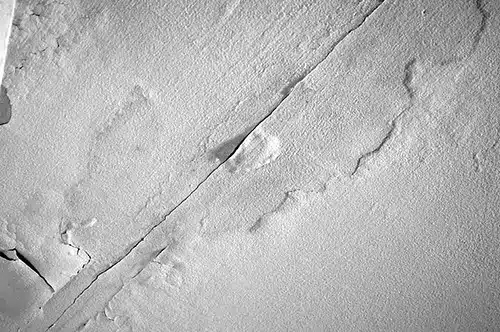
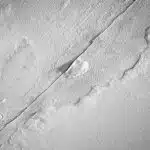

![How To Get Hair Out Of A Bathtub Drain 4 2/365 [Bathtub Drain]](https://green-life.blog/wp-content/uploads/2023/05/cOEu5edpkejq-150x150.jpg.webp)







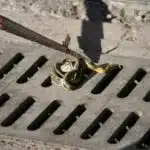
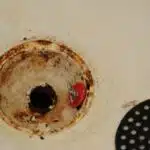
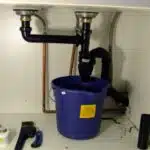





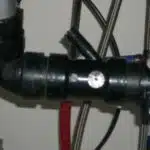

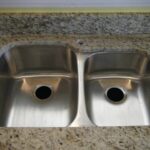
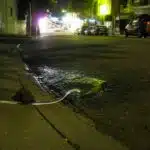
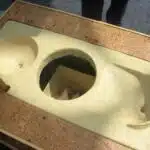
![How To Replace A Bathtub Drain In A Mobile Home 25 2/365 [Bathtub Drain]](https://green-life.blog/wp-content/uploads/2023/05/3ft8KAJsNnjq-150x150.jpg.webp)
